The engine oil performs two main functions in a motorcycle – i) lubrication and ii) cooling.
If you ride a motorcycle with low engine oil, problems are bound to happen.
Overheating. That’s how it starts.
So, what happens when the motorcycle runs out of oil? What are the symptoms of a motorcycle running out of engine oil?
Here are the symptoms of low engine oil levels in a motorcycle:
- Overheated engine
- Oil or temperature sensor flaring up
- High engine noise and vibrations
- Hard shifting of gear
- Poor gas mileage
- Engine seizure
- Burnt clutch plates
If left unchecked, low oil levels can damage the engine and its components.
The motorcycle engine will start heating up since there is not much oil to act as a coolant.
Starting with wear and tear and overheating, the low oil levels can affect the components by damaging the piston rings, cylinder lining, the piston, engine valves, and even the clutch plates.
Symptoms of low engine oil in a motorcycle
If your motorcycle is running out of oil, how will you know about it?
Here are the symptoms of low or empty engine oil in your motorcycle:
#1. Overheated engine
Low oil levels cause the engine to overheat.
So if the engine is overheated, most likely your motorcycle is running out of oil.
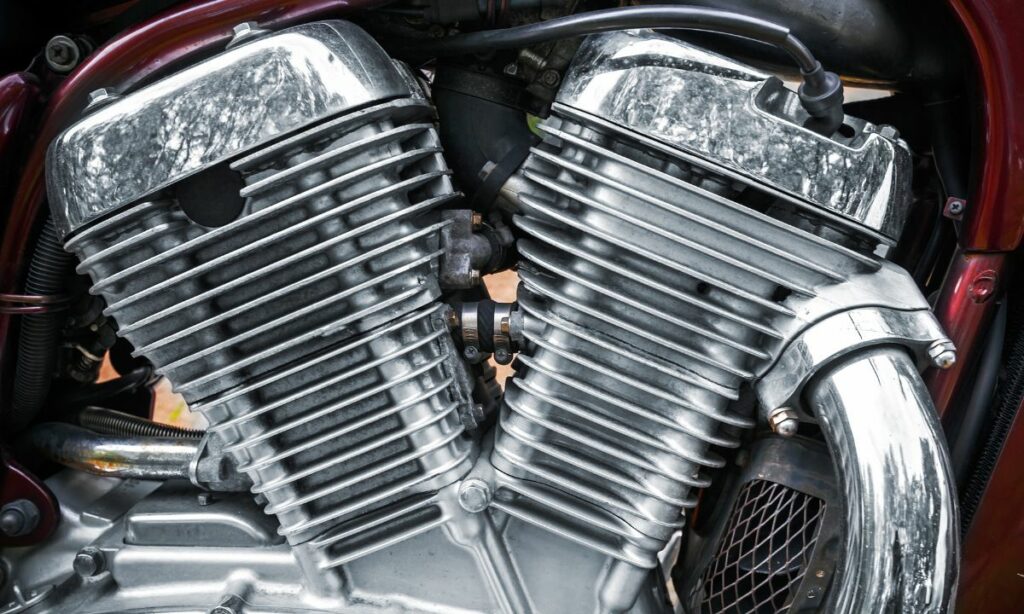
It doesn’t stop there.
Engine components are the worst affected when the bike runs out of oil (we discuss more later).
The oil lubricates the engine components. Without the oil lubricating, these engine parts start to heat up.
So, if there is increased temperature and a heated engine, that’s another symptom of low engine oil in your motorcycle.
#2. Oil or temperature sensor flaring up
Few motorcycles have oil pressure and coolant temperature warning light.
A few have temperature gauges, either OEM or aftermarket installed, in their motorcycles.
These sensors can be used to identify low oil levels in the motorcycle.
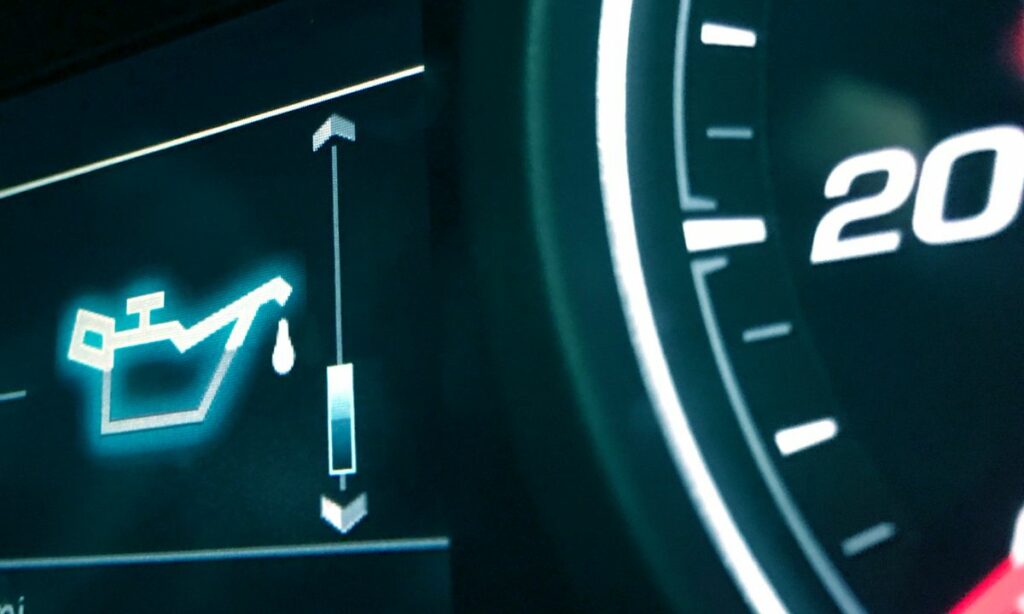
The oil sensor straight-up tells you the motorcycle has low engine oil levels.
Temperature sensors are a bit tricky.
You have to troubleshoot why the engine temperature is high.
The high temperature can be due to low oil levels. But can also be because of the cooling system not working, the fuel mixture not being right, etc.
To confirm you have to check the oil levels.
#3. High engine noise and vibrations
Excessive noise and increased engine vibrations are another symptom of low oil levels.

With less lubrication, the slick (the oil film) formed between the engine components start to thin out.
As a result:
The engine parts face higher friction between them.
Leading to – increased noise and vibrations.
#4. Hard shifting of gear
As there is no sufficient oil in the motorcycle, the gear shifting will not be smooth.
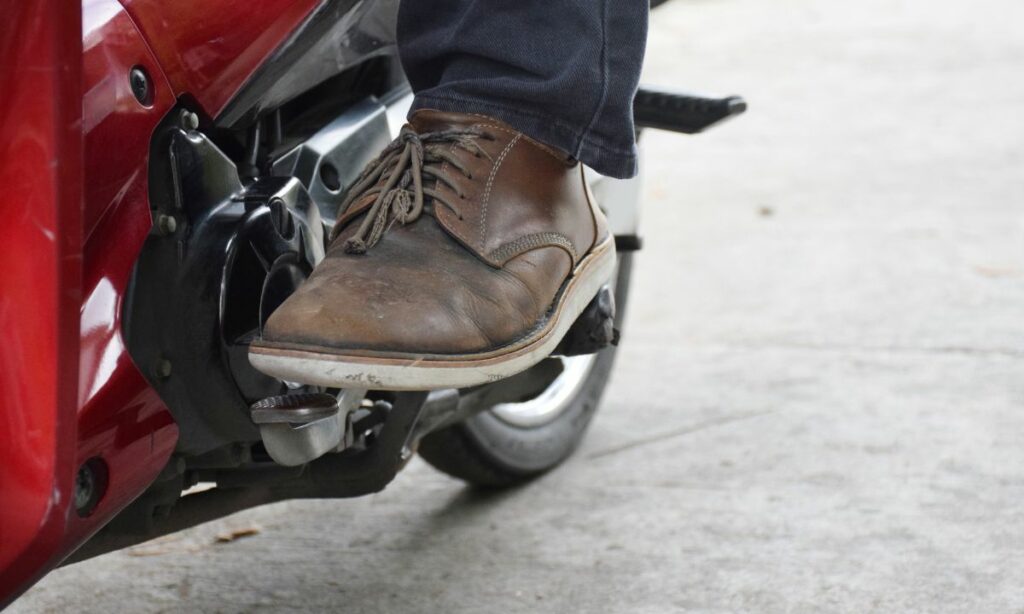
You will feel the effort and noise while shifting the gears of your motorcycle.
This is different from the normal clunk noise.
Hard shifting will be really hard (duh!).
The noise will be far more loud than a small clunk. Even the shifting requires more effort.
#5. Poor gas mileage
The efficiency of the engine will drastically reduce when the oil levels are low in the motorcycle.
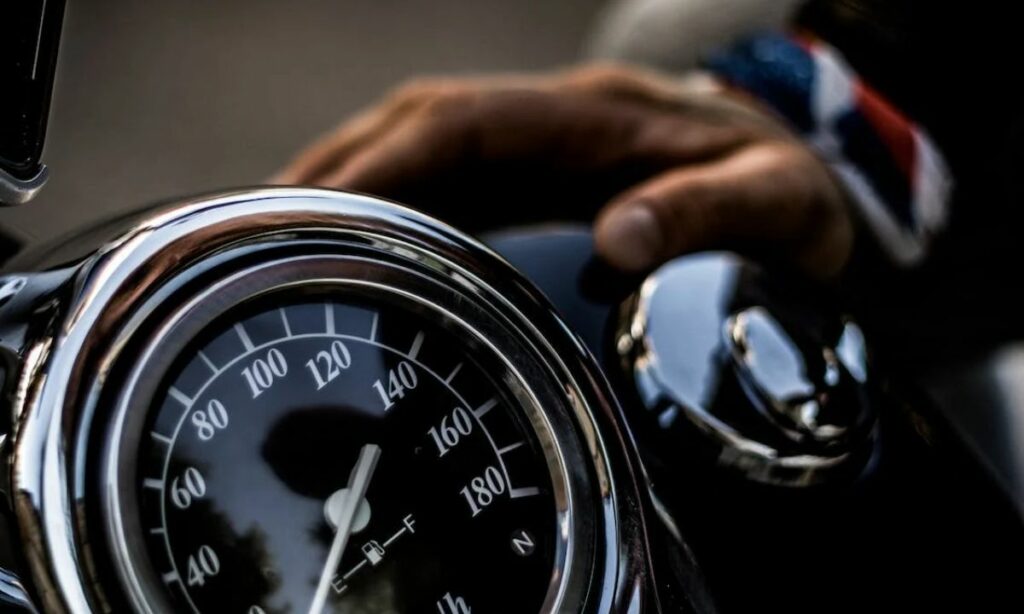
The engine components without proper lubrication see more friction and heat up.
As a result, they don’t work well. resulting in poor fuel efficiency.
This reduced efficiency in turn leads to low fuel mileage.
#6. Engine seizure
Engine seizure basically means the engine locking up and not the components not being able to move easily.
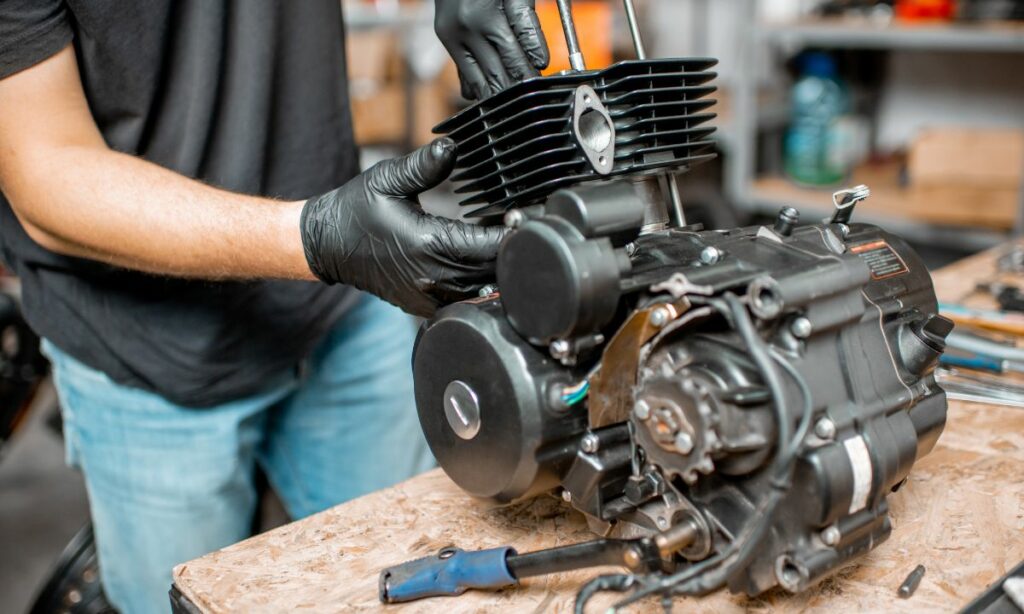
Lack of lubrication (i.e., no or low engine oil levels) is the primary reason for engine seizures.
The components face too much friction and get locked up to move any further.
This is one of the worst cases.
And you should be careful and refill the engine oil in your bike before it reaches the stage of engine seizing.
#7. Burnt clutch plates
Motorcycles have wet clutches.
And wet clutches need engine oil to operate smoothly.
Clutch plates or friction plates may get burnt out due to excessive friction and heat generated and with no sufficient oil flow to lubricate.
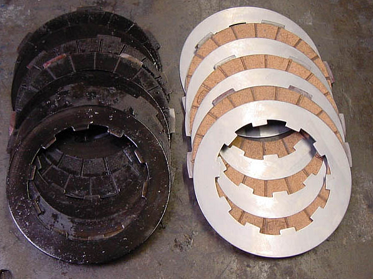
So if your motorcycle has no or less engine oil, the clutch plates can burn out. Burnt clutch plates are another indicator that oil levels are low.
How to check and confirm low oil level
All the above symptoms should point you to check the engine oil levels in your motorcycle.
To confirm, you must check the oil level.
Park your motorcycle.
Locate the engine oil gauge (dip-stick).
Next, take out the oil dipstick.
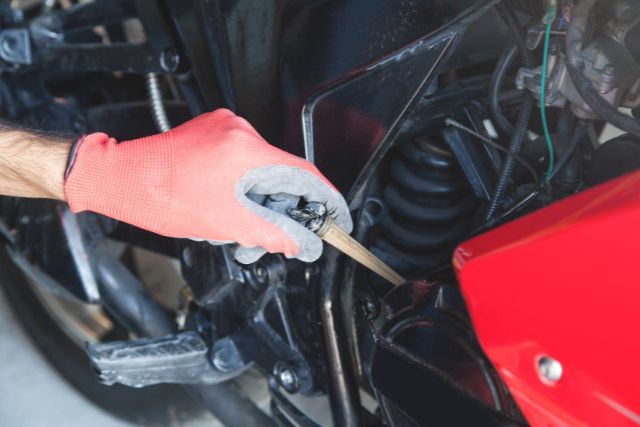
Now, the oil gauge will be marked with two levels. The top mark is for ‘full’ and the bottom mark is for ‘low’.
The actual oil level can be seen from the wet mark.
The wet mark must be between the two marks (high and low).
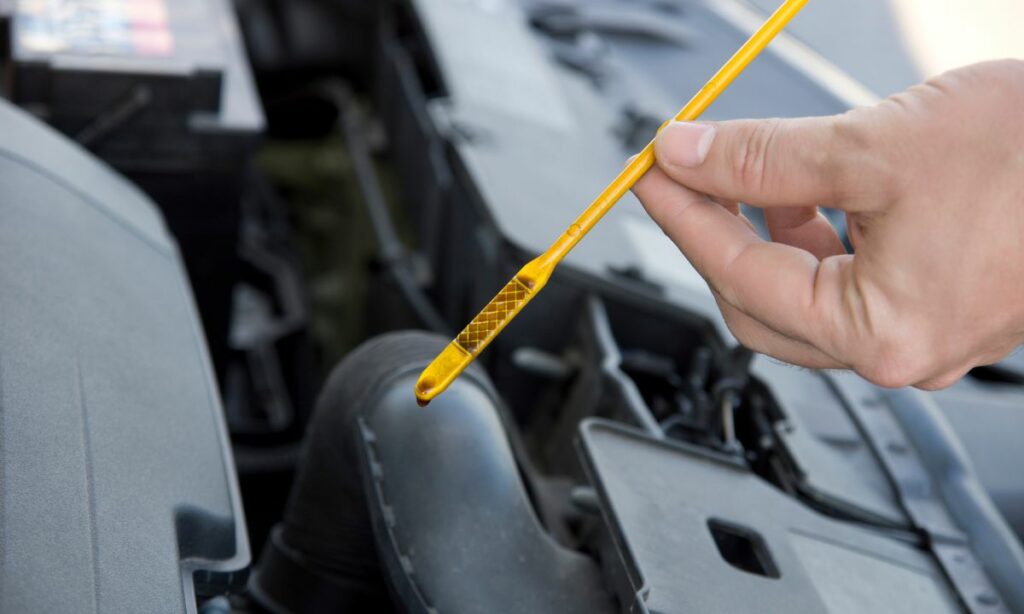
If the dipstick has wet mark below the ‘low’ mark, then the oil levels are low.
You must change the oil immediately. Or top up if had changed the oil recently.
What are the effects of low oil levels?
When the oil levels are low in your motorcycle, the effects are obvious.
- Engine wear and tear: As the oil levels go lower, the slick film that forms between the engine parts, thins out. As a result, the friction between the contact surfaces increases thereby causing the wear.
- Engine parts heat up: Since there is no continuous flow of oil in the system, the heat dissipated from the friction remains with the engine parts. As a result, the engine parts heat up with no oil there to act as the coolant.
- Damaged Piston rings: Piston rings may get damaged because of overheating. However, replacing the piston rings is easy and inexpensive as well.
- Damaged Cylinder lining: A damaged cylinder lining on the other hand is a serious issue. You might have to get it fixed which might require re-boring. This can turn out to be an expensive affair.
- Piston wear: Unlike piston rings, replacing the piston itself can be quite expensive. Depending on the amount of damage and the area where there is wear, you can get it fixed or replace it entirely. Usually, piston wear will also be associated with a damaged cylinder lining since they are in contact with each other.
- Impaired engine valves: Engine valves may get damaged if the motorcycle runs out of oil. Although replacing valves is simple, the engine has to be taken apart and dismantled, which can be expensive for the motorcycle owner.
How far can your motorcycle go with low engine oil?
If you are running the motorcycle with low engine oil, the motorcycle will run until the engine seizes functioning.
The exact distance that you will travel will vary from one motorcycle model to the other.
On average, the motorcycle may last around 40 to 50 miles max.

However, one should be aware that although a motorcycle may run for these many miles even with low oil levels, you are causing permanent and premature wear in the engine parts.
And as mentioned earlier, some of the wear in the engine parts may prove to be costly in the long run.
How frequently should you change the oil?
The next question that pops up is how frequently should one change the oil in the motorcycle.
As a general rule of thumb, here are the recommended frequency of oil changes for the distance traveled based on the type of oil you are using.
| Type of Oil | Frequency for Oil change |
|---|---|
| Mineral Oil | 2000 miles |
| Semi-Synthetic Oil | 5000 miles |
| Synthetic Oil | 8000 miles |
The frequency of oil change depends on the make of the motorcycle, the type of oil you use, how old the motorcycle is, what condition the motorcycle and engine is in, and how you use your motorcycle – for short rides, long rides, etc.
However, if you ride the motorcycle for long distances frequently, you may have to change the engine oil and take it for servicing much more frequently.
You want to ensure the quality of oil remains top notch for the smooth functioning of oil in the motorcycle.
How to change the oil
Before you start changing the oil in your motorcycle engine, here are the items you need to have in hand.
- New Engine Oil (duh!)
- Drain Tray
- Funnel
- Socket wrench
- Torque wrench
- New Oil filter, if applicable
- Gloves and rags
Now that you have everything ready, here are the steps you need to follow while changing the oil in your motorcycle.
- First, run the engine for a minute or two for warm-up. Warm oil is easy to drain.
- Wait for some time after stopping the engine and then, unscrew the oil filler cap and set it aside.
- Place a drain tray underneath the drain plug. Now, carefully unscrew the drain plug using a socket wrench. The oil will start to drain now.
- Once the oil has started to drain out, it is time to remove the old oil filter. Use a wrench to unscrew and then use your hand to turn counterclockwise and remove the filter.
- Once the oil is drained out completely, you can refit the oil filter back. Whether to use a new oil filter or clean up and use the old one again is up to you. Depending on the condition of the oil filter you can choose to decide.
- Then, carefully screw the chosen filter back into place and make sure you are not over-tightening it.
- Refit the drain bolt back and clean the bolt with some fresh oil before refitting.
- Now you need to refill the engine with new oil. Place the funnel into the fill hole and start pouring the new oil. Make sure to fill the oil in the engine according to the manufacturer’s recommendation.
- Place back the filler cap and clean up the dirt or oil splashes in your motorcycle with a rag or towel.
Final words
Running the motorcycle on low oil levels is a bad idea.
The engine overheats. And can even result in seizures.
In addition, the engine parts might face heavy damage.
So, as soon as you notice the symptoms of low oil levels in your motorcycle, check the oil level and top up or change the oil immediately.
Before you go…
Here are a few more engine oil related posts for you:
